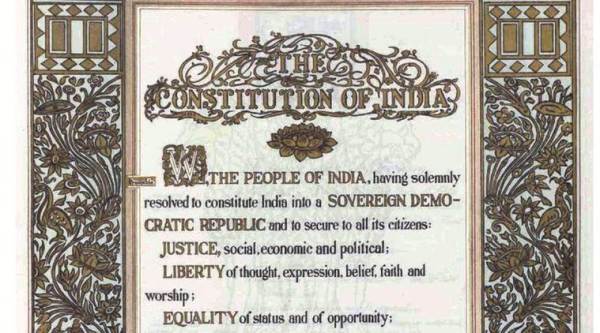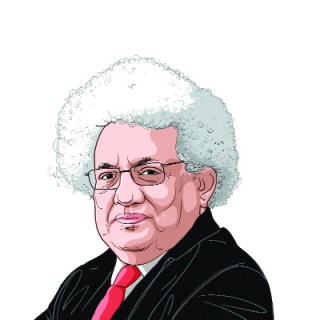Out of My Mind: Power of Centre against that of states
The Government of India Act 1935 was the basis for the 1946 elections which created the Legislative Assembly which became the Constituent Assembly. Partition changed everything.

If there is one matter on which there is almost universal agreement in Indian politics, it is the Constitution. It is one of the longest in the world and has been amended practically continually since the day after it was promulgated. There have been frequent debates about changing it fundamentally, most recently during the Atal Bihari Vajpayee era. There is also a frequent cry, as it happened last week of ‘Constitution in Danger’.
The issue is the power of the Centre against that of the states, or the nature of federalism. Few people remember that as late as July 1946, the proposed Constitution of India (undivided) was going to be a Confederate one with powerful Provinces whose elected heads were called Prime Ministers and a weak Centre with Defence, Foreign Affairs and Currency among its subjects. The Government of India Act 1935 was the basis for the 1946 elections which created the Legislative Assembly which became the Constituent Assembly.
Partition changed everything. Instead of a Union of powerful Provinces and weak Centre, the Constituent Assembly chose a strong Centre with states whose boundaries could be altered by the Centre. There was an implicit assumption that the Congress will rule at the Centre and all the states forever, which would allow Centre-state disputes to be settled at party level. That lasted till 1967, though the arbitrary dismissal of the first Communist government of Kerala showed that even Jawaharlal Nehru’s commitment to democracy had limits. It got worse and the Centre misused the President’s Rule powers shamelessly, not to mention the Emergency.
It was as the Congress began to lose its monopoly of power that federalism blossomed. States became powerful. Tamil Nadu became practically autonomous after 1967 when the Congress was thrown out and then no outside party ever came to power. West Bengal asserted its independence when Jyoti Basu ruled supreme.
States’ demand for revenue sharing was accommodated by successive Finance Commissions, but on political matters the power equation between the Centre and states alters with personalities. There is no redress except via the Supreme Court. When the Centre was weak during 1988-1998, the Supreme Court gathered lot of power to itself and became autonomous, as its system of Collegium shows. It has not given up that power despite a Constitutional amendment to establish a National Judicial Appointments Commission. Here the disproportionate weakness of the principal opposition party has helped the court. Lately, the fissures within the topmost judges and the cavalier attempts to impeach the Chief Justice of India have done no one any good. The system may not be broke but it is not working as expected.
The most recent fracas, between the West Bengal CM and CBI, has shown once again that it is not rules of established practice that govern Centre-state relations. Luckily, the Centre showed restraint and did not slam President’s Rule as in the old Congress days, but the fact remains that the balance between the Centre and states is not as was assumed in 1949. States are developing tariff barriers when it comes to jobs and reservations wanting to favour their ‘native sons of the soil’, as the most recent example of Madhya Pradesh shows. This will only grow as the NRC issue in Assam demonstrates.
The glue of the Constitution is drying up.






































No hay comentarios:
Publicar un comentario